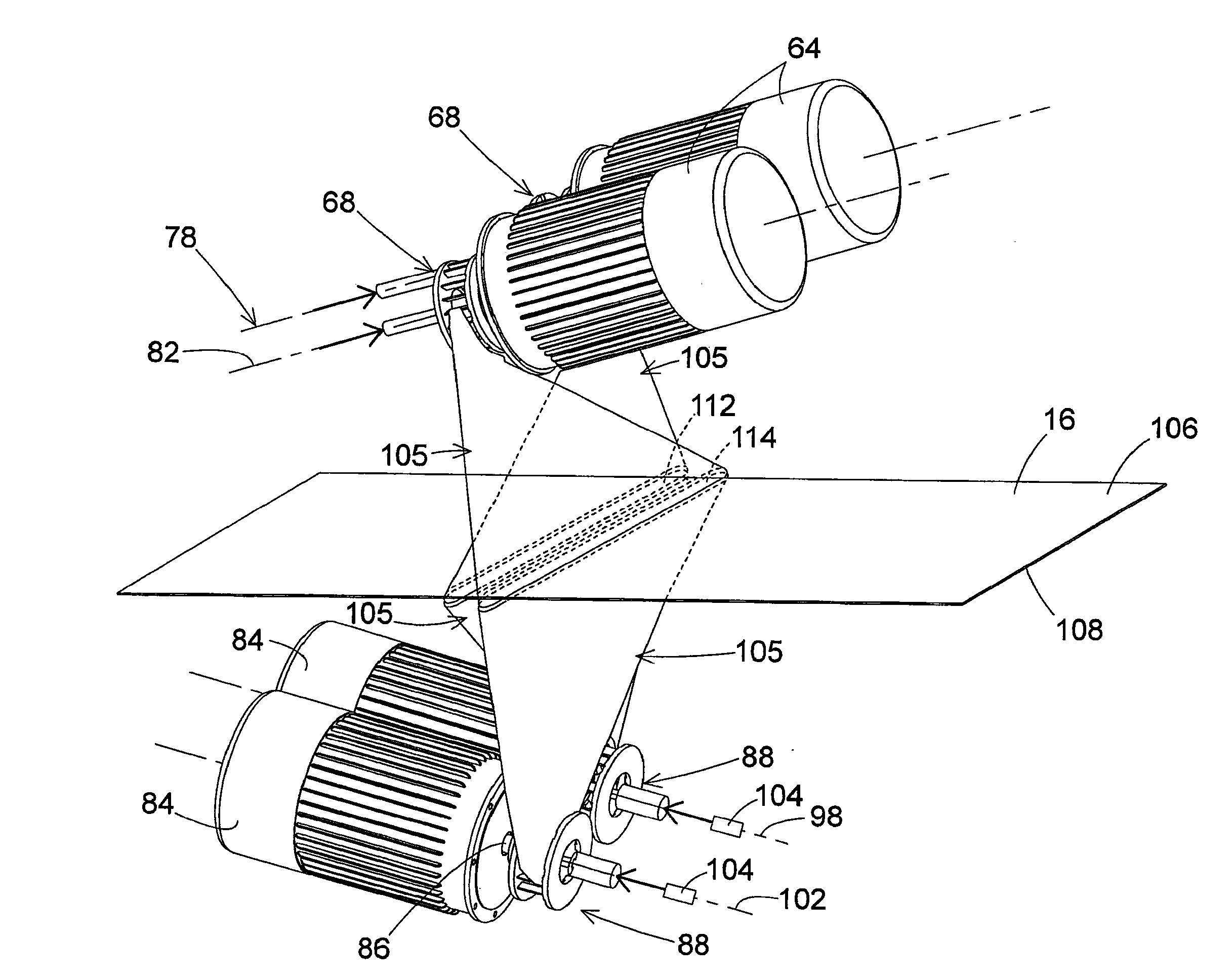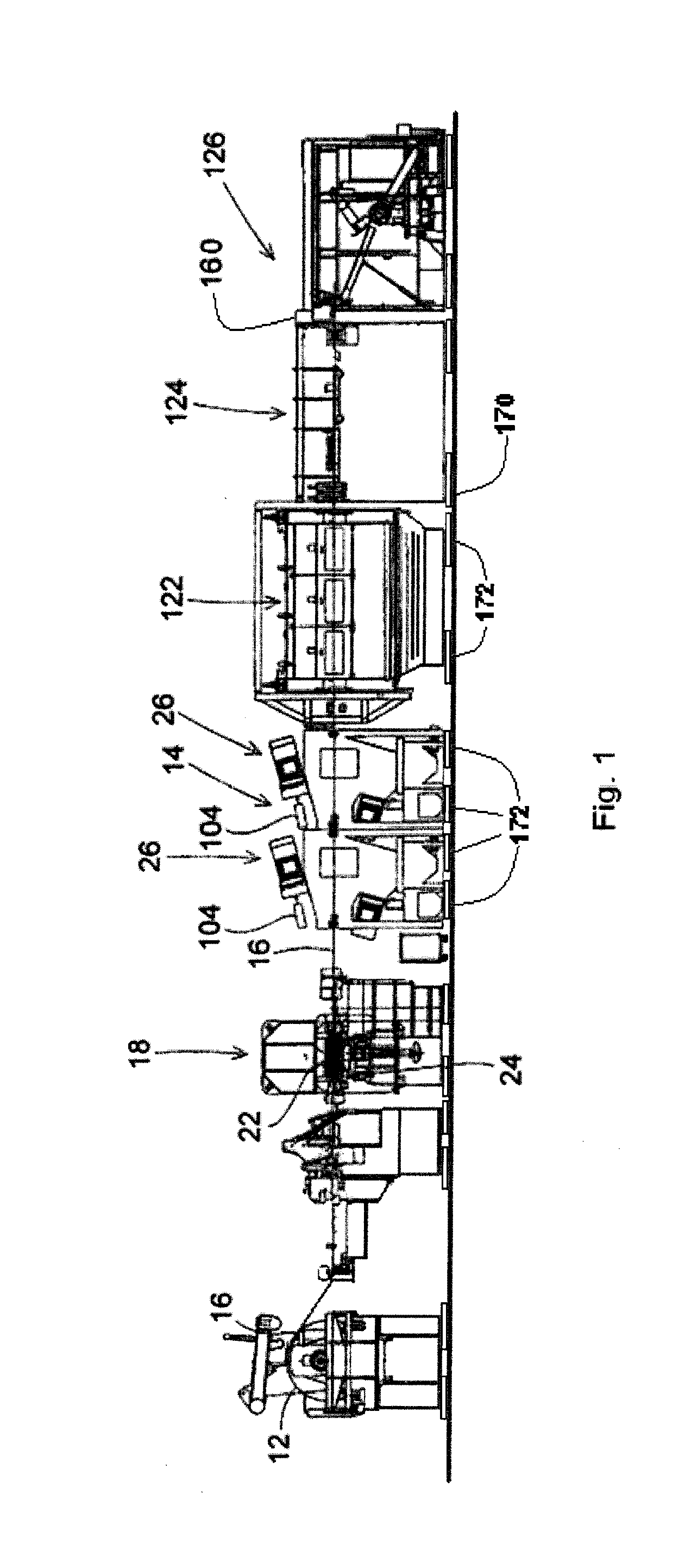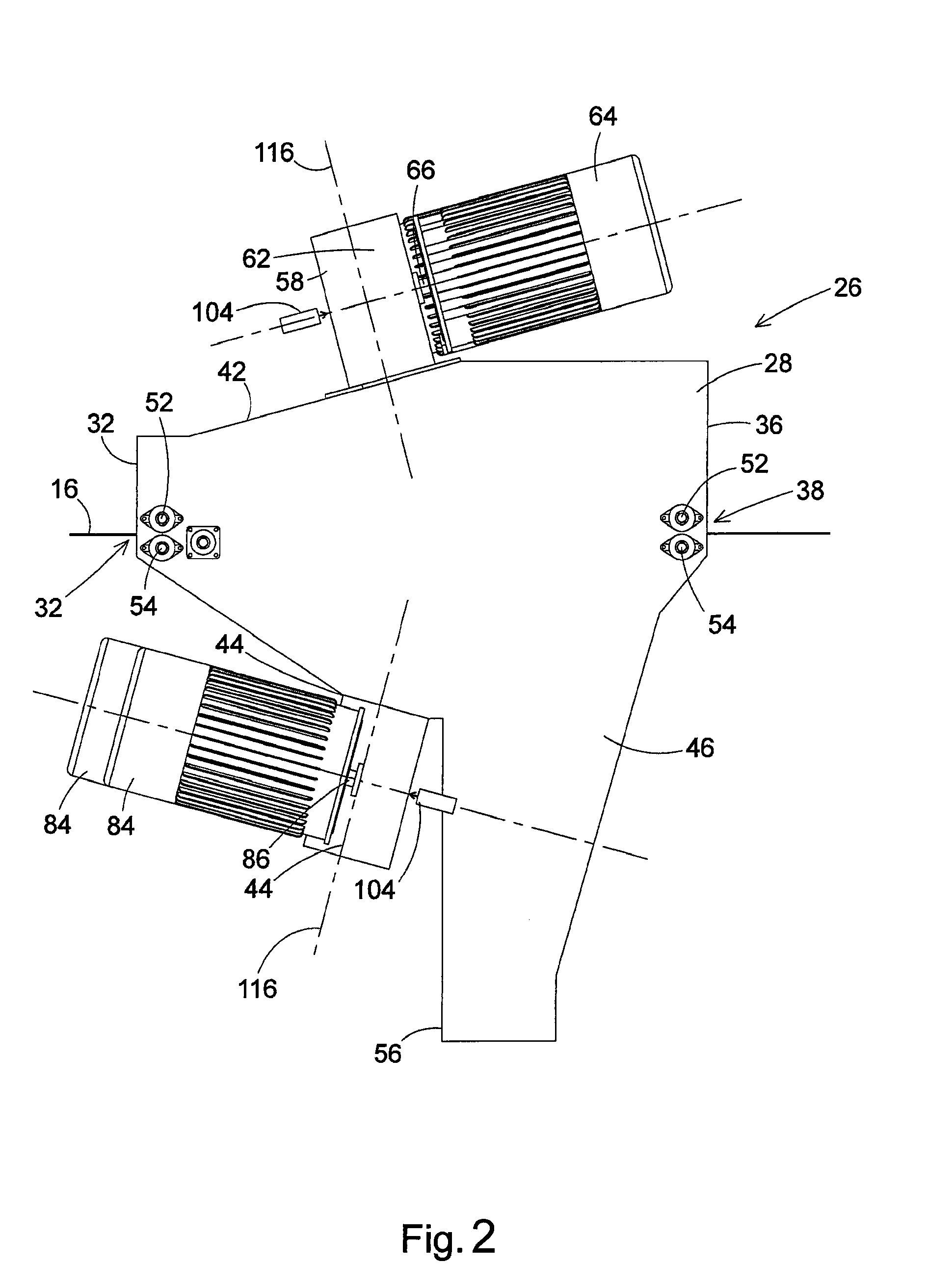Method of Producing Rust Inhibitive Sheet Metal Through Scale Removal with a Slurry Blasting Descaling Cell Having Improved Grit Flow
a technology of scale removal and descaling cell, which is applied in the direction of manufacturing tools, edge grinding machines, chemistry apparatus and processes, etc., can solve the problems of corrosive acid used in the acid bath, affecting the quality of rust inhibitive sheet metal,
- Summary
- Abstract
- Description
- Claims
- Application Information
AI Technical Summary
Problems solved by technology
Method used
Image
Examples
Embodiment Construction
lass="d_n">[0014]FIG. 4 is an end elevation view of the descaler from the downstream end of the descaler.
[0015]FIG. 5 is a representation of a portion of the descaler shown in FIGS. 3 and 4.
[0016]FIG. 6 is a representation of a further portion of the descaler shown in FIGS. 3 and 4.
[0017]FIG. 7 is a representation of a further portion of the descaler shown in FIGS. 3 and 4.
[0018]FIG. 8 is an exploded, perspective view of a blast wheel used in the descaler of FIGS. 1-7.
[0019]FIG. 9 is a schematic drawing showing components of the slurry delivery and recirculation system.
[0020]FIG. 10 is a cross sectional view of an eductor of the slurry delivery and recirculation system of FIG. 9.
[0021]FIG. 11 is a representation of an embodiment of the descaler that removes scale from a narrow, thin strip of material.
DETAILED DESCRIPTION OF THE PREFERRED EMBODIMENT
[0022]FIG. 1 shows a schematic representation of one embodiment of a processing line incorporating a slurry blasting descaling cell that ...
PUM
| Property | Measurement | Unit |
|---|---|---|
| velocity | aaaaa | aaaaa |
| temperature | aaaaa | aaaaa |
| angle | aaaaa | aaaaa |
Abstract
Description
Claims
Application Information
 Login to View More
Login to View More - R&D
- Intellectual Property
- Life Sciences
- Materials
- Tech Scout
- Unparalleled Data Quality
- Higher Quality Content
- 60% Fewer Hallucinations
Browse by: Latest US Patents, China's latest patents, Technical Efficacy Thesaurus, Application Domain, Technology Topic, Popular Technical Reports.
© 2025 PatSnap. All rights reserved.Legal|Privacy policy|Modern Slavery Act Transparency Statement|Sitemap|About US| Contact US: help@patsnap.com



